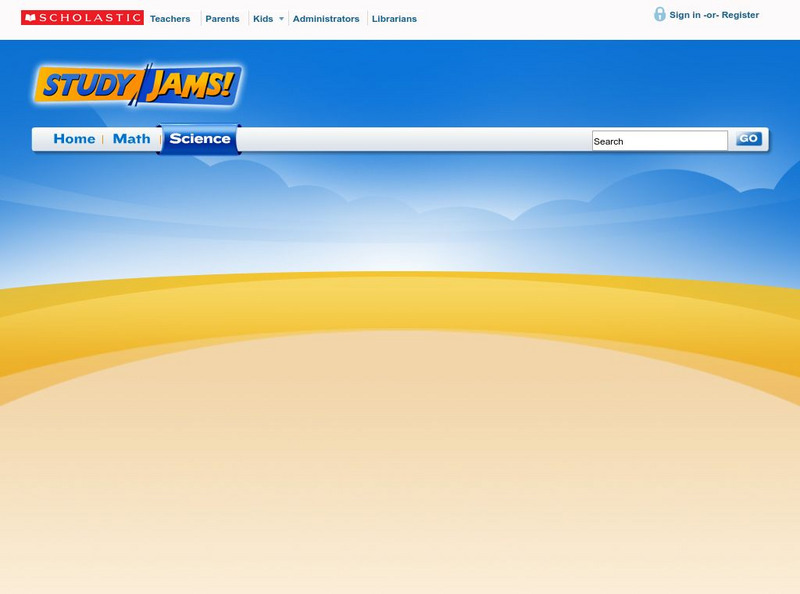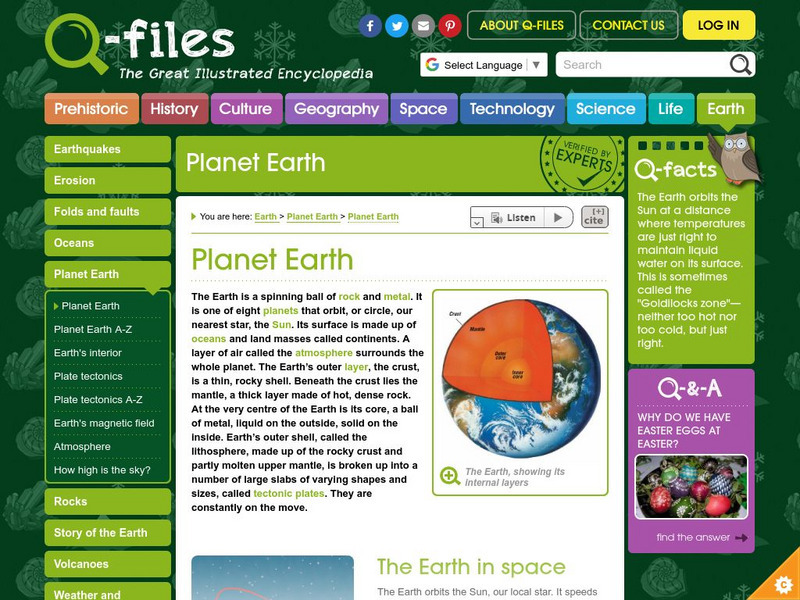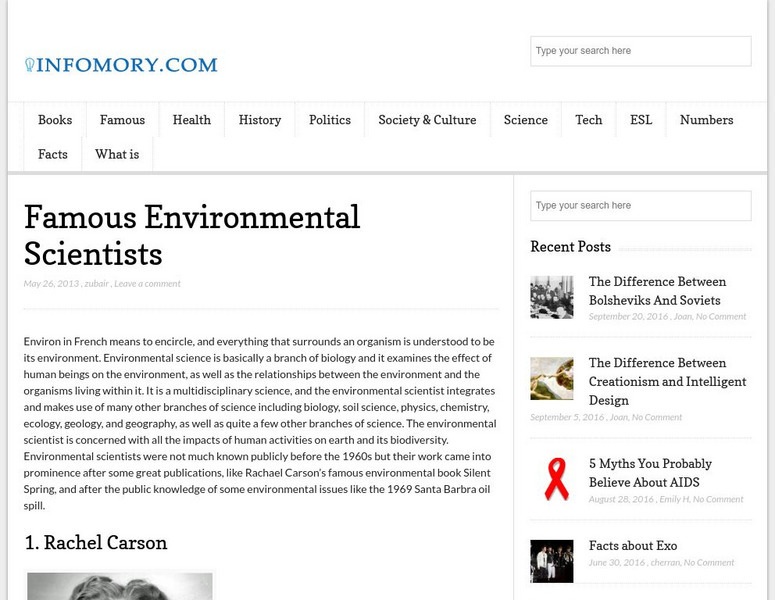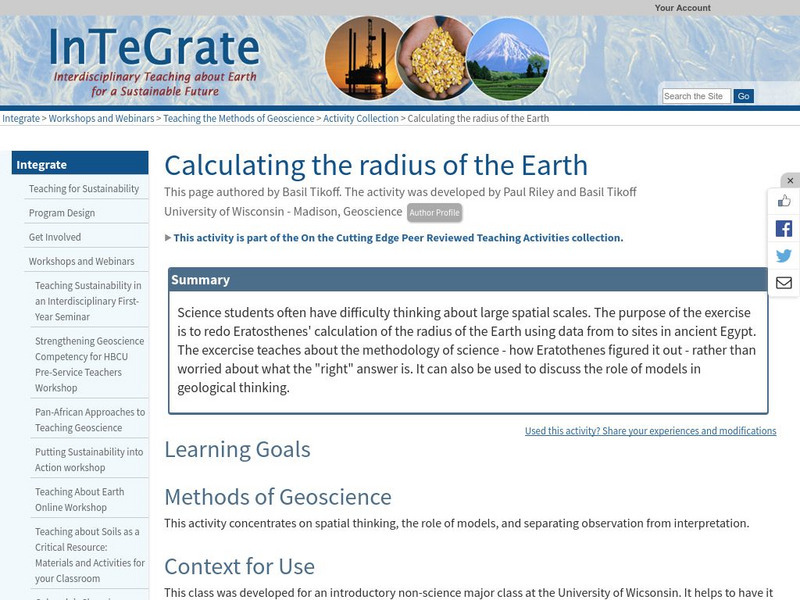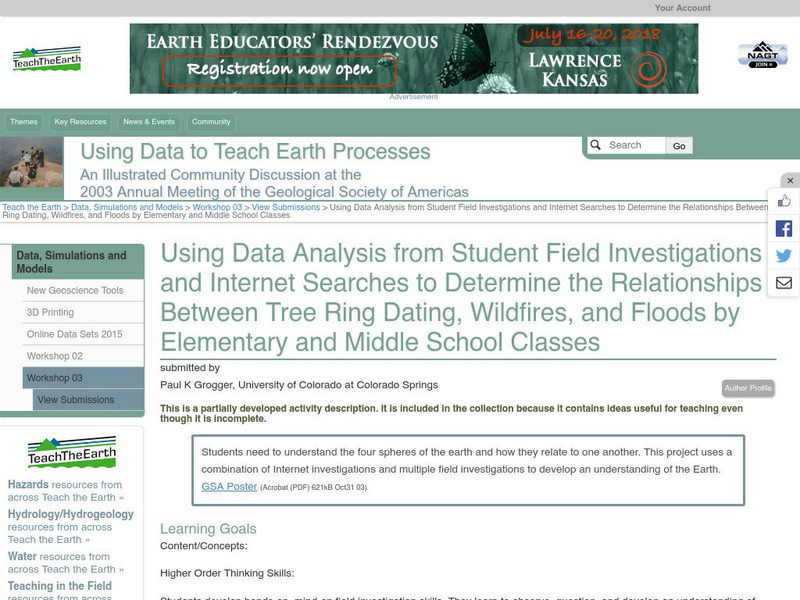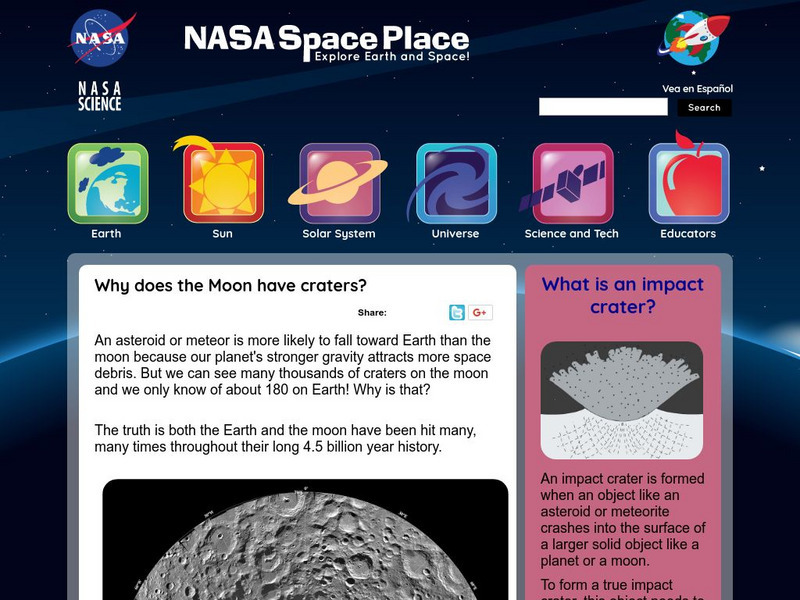PBS
Pbs Learning Media: The Planets of the Solar System
As technology has advanced, so do our views and understanding of the solar system. No longer do we have to rely on our unaided eyes to observe planets. View these high-quality images of planets provided by NASA spacecraft.
Harvard University
Eyes on the Sky, Feet on the Ground: The Earth's Rotation
Plenty of cool activities about the Earth's rotation can be found here, such as tracing shadows, observing shadows during different times of the day, and tracking the sun's path in the sky to understand the rotation of the earth.
Harvard University
Harvard University: Maps and Mapping
This site is provided for by Harvard University. Students follow a map on a scavenger hunt, create a map of their classroom and their town, learn how to read topographic maps, and discover latitude and longitude in these inquiry activities.
NASA
Nasa: Space Place: Dr. Marc Answers Questions About Earth & Moon
Discover facts about the Earth and the Moon with NASA scientist, Dr. Marc Rayman.
Other
University of Cambridge: Astro Adventure
Imagine a time when you can travel through space, planet to planet, cheaply and in comfort, when you can take a trip to the stars as your next holiday. Well, imagine no more. Learn more about the solar system as you take this trip of a...
Other
Jules Verne Voyager: Earth
A map resource that allows users to view many different features of the topography, textures, and geodetic data on selections in the drop down menus.
Other
Jules Verne Voyager Jr.: Earth
A map program allows users to explore the many features of Earth. Select base maps, features, and velocities.
Other
Jules Verne Voyager: Gem Global Strain Rate Map
GEM GSRM uses a texture underlay grid showing the 2nd invariant of lithospheric strain rate, with an image overlay of coastal outlines in white - which forces the texture underlay to have a black background in regions of zero strain...
Planet Pals
Planet Pals: Earth Day
This PlanetPals.com site provides the "Greatest Earth Day Pages Ever!" Includes activities, teaching aides, earth science and history, and more.
Other
Minnesota 4 H: Environmental Science Career Guide [Pdf]
Browse this guide to careers in the field of environmental science. Includes potential employers and job possibilities in Minnesota.
USA Today
Usa Today: Jet Stream Roars Along High Above Earth
A good explanation of the jet stream is offered with links to other related information.
University of Minnesota
University of Minnesota: S Hi Ps: James Hutton: Theology and Geology
James Hutton laid the foundation for dispelling religious ideas about the Earth and thus created a theological and geological debate. Describes Hutton's novel views on heat energy in geology,and his classification as a "Plutonist" in...
Other
Cornerstone Networks: Fourth Grade Science Lesson 1
This site, designed as a fourth-grade lesson, focuses on the earth's atmosphere with information on prevailing winds.
Scholastic
Scholastic: Study Jams! Science: Our Solar System: Inner Planets
A slideshow and a short multiple-choice quiz on the four inner planets of our solar system, which include Mercury, Venus, Mars, and Earth.
Other
Lunar and Planetary Institute: Explore! Marvel Moon
A variety of hands-on activities designed to engage children in learning about the moon.
Other
Mother Nature Network: Earth Day: An Animated Tribute
Animated review of environmental legislation and events, produced as a commemoration, in 2010, on the forty-year anniversary of the first Earth Day. Includes a timeline of events. [4:40]
University of Victoria (Canada)
Weather Watch: Water Cycle
Excellent discussion and illustration of the water cycle.
National Geographic
National Geographic: Build a Magnetometer
Hands-on project where the learner constructs a magnetometer to monitor and measure changes in earth's magnetic field. These changes can then be used to track solar storms.
Orpheus Books
Q Files: Planet Earth: Planet Earth
Earth's features and facts are discovered and explained in this brief entry. Identify what makes this planet special.
Other
Informory: Famous Environmental Scientists
Read a short biography about ten environmental scientists who have shown concern with the impacts of human activities on Earth and its biodiversity.
Other
Environmental History: Between Science and Philosophy
Gain a perspective on the origins of the contemporary environmental crisis, where an awareness of the environment came into being.
Science Education Resource Center at Carleton College
Serc: Calculating the Radius of the Earth
Science students often have difficulty thinking about large spatial scales. The purpose of the exercise is to redo Eratosthenes' calculation of the radius of the Earth using data from to sites in ancient Egypt. The excercise teaches...
Science Education Resource Center at Carleton College
Serc: Relationships Between Tree Ring Dating, Wildfires, and Floods
In this lesson young scholars will understand the four spheres of the earth and how they relate to one another. This project uses a combination of Internet investigations and multiple field investigations to develop an understanding of...
NASA
Nasa: Space Place: Why Is the Moon So Scarred With Craters?
Find out about why Earth's moon is full of craters, and what happens to asteroids and meteors when they come into contact with Earth.










